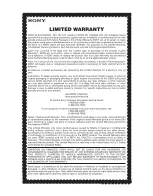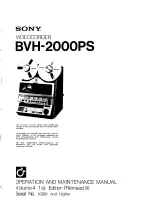
Introduction
DVR User Manual
3
Support a maximum of 10 backup tasks in background and backup status viewing
Alarm Management
Support alarm schedule setting
Support enabling or disabling of the motion detection, external sensor alarm input,
intelligence alarm and exception alarms including IP address conflict alarm, disk IO error
alarm, disk full alarm, no disk alarm, illegal access alarm, network disconnection alarm, IPC
offline alarm and so on, alarm trigger configuration supportable
Support IPC offline alarm trigger configuration of PTZ, snap, pop-up video, etc.
Support event notification modes of alarm-out, pop-up video, pop-up message box, buzzer,
e-mail and so on
The snapped images can be attached into the e-mail when alarm linkage is triggered
Support alarm status view of alarm-in, alarm-out, motion detection and exception alarm
Support alarm to be triggered and cleared manually
Support system auto reboot when exception happens
Network Functions
Support TCP/IP and PPPoE, DHCP, DNS, DDNS, UPnP, NTP, SMTP protocol and so on
Support allow and block list function and the allow and block IP address/IP segment/MAC
address can be set
Support multiple browsers including IE8/9/10/11, Firefox, Opera, Chrome (available only
for the versions lower than 45) and Safari in MAC system
Support remote achievement, configuration, import and export of the DVR parameters and
other system maintenance operations including remote upgrading and system restart
Support remote camera configuration of the DVR including video parameters, image
quality and so on
Support remote searching, playback and backup of the DVR
Support manual alarm to be triggered and cleared remotely
The auto-focusing camera can be adjusted through web client (support zoom in/out, but
one key focus is not currently supported)
Support NVMS or other platform management software to access the DVR and manage it
Support NAT function and QRCode scanning by mobile phone and PAD
Support mobile surveillance by phones or PADs with iOS or Android OS
Support DVR to be accessed remotely through telnet and the telnet function can be
enabled or disabled
If one camera recording is enabled or disabled manually through web client, it will be
simultaneously enabled or disabled in the DVR
Other Functions
The DVR can be controlled and operated by the buttons on the front panel, the remote
controller and the mouse
Setting interfaces can be switched to one another conveniently by clicking the main menus
on the top of the setting interfaces
Support DVR information viewing including basic, camera status, alarm status, record
status, network status, disk and backup status
Summary of Contents for JN6300-S
Page 108: ...FAQ DVR User Manual 102 Fig 9 2...










































